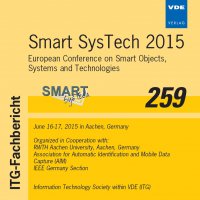An Active Learning-Based Framework for Optimal Product Design Under Multiple Objectives
Conference: Smart SysTech 2015 - European Conference on Smart Objects, Systems and Technologies
07/16/2015 - 07/17/2015 at Aachen, Germany
Proceedings: Smart SysTech 2015
Pages: 9Language: englishTyp: PDF
Personal VDE Members are entitled to a 10% discount on this title
Authors:
Qu, Shuhui; Wang, Jie; Jian, Weiwen; Chu, Tianshu (Center for Sustainable Development and Global Competitiveness, Stanford University, Stanford, USA)
Li, Guofeng (Foshan Nanhai Superband Mould Co., Ltd., Guangzhou, P.R.C)
Abstract:
Ever-increasing global competition, together with the rapid development of technology, innovative business models, and accelerated customer and market requirements, have boosted demand for advanced manufacturing. One of the most critical aspects in manufacturing is how to optimally conduct product design that can meet different requirements. Generally, to successfully create good product design, designers should align their product designs with manufacturing enterprises’ multiple objectives and current constraints. In other words, with uncertainty and limited data, designers have to determine the correlations between numerous product parameters and the objectives and constraints. This requirement presents new challenges for implementing advanced manufacturing technologies. This paper investigates an active learning-based framework for optimizing product design with numerous parameters to realize multiple objectives under realistic conditions. The framework integrates data-driven approaches into optimizations, and then applies the solutions to optimization problems in different enterprise-related areas. In particular, we first define an optimization model for the problem of relevant design by integrating a support-vector machine methodology with an optimization approach for product design and the relevant manufacturing process. Next, by utilizing the welldefined model, we formulate an active learning-based framework to compute the importance of different product parameters and properties, as well as to generate optimal product design by estimating optimal parameters. Finally, numerical experiments are performed in a simulated process of designing a new wheel product, using realistic data collected from a number of completed wheel product design projects. The results demonstrate the effectiveness of the proposed active learning-based framework. Through this study, we hope to shed light on how to employ an active learning-based framework to quantitatively facilitate optimized, multiple-objective product design processes under complex manufacturing environments.


